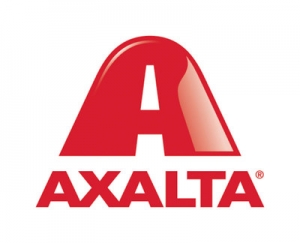Coatings World staff10.06.20
The U.S. oil, natural gas and chemicals (OG&C) industry slashed 107,000 jobs from March to August 2020, the fastest rate of layoffs in the industry’s history.
Heightening employment cyclicality and layoffs are challenging the industry’s reputation as a reliable, long-term employer.
The sensitivity of U.S. OG&C employment to oil prices is extremely high, with a dollar change in oil price potentially affecting 3,000 upstream and oilfield services jobs.
In a business-as-usual scenario of waiting and responding to oil price cycles, about 70% of jobs lost during the pandemic may not return by the end of 2021 at $45 per barrel.
This downturn or the “great compression” is like no other, challenging fundamental and deeply interconnected dimensions of the industry’s work, workforce and workplace.
The industry’s reputation as a reliable employer has been challenged following big layoffs and heightened cyclicality in employment triggered by recent subsequent downturns and the COVID-19 pandemic. Deloitte's new study, "The Future of Work in Oil, Gas and Chemicals: Opportunity in the time of change,” explores the opportunities today’s changed environment could present organizations to transform themselves and bolster their earlier appeal with current and prospective employees.
The short-cycle nature of shales has made hiring extremely cyclical. From 2014-19, a dollar movement in oil price affected 3,000 upstream and oilfield services jobs compared to 1,500 in the 1990s. With COVID-19 leading to the fastest layoffs in the industry’s history, the study highlights that 70% of jobs lost during the pandemic may not return by the end of 2021, assuming a $45 per barrel oil price, if OG&C companies continue to operate as-is.
This downturn is like no other and will have profound impacts on the industry
Simultaneously confronted with multi-decade low prices, unforeseen demand destruction, and changes in end-use consumption due to mass telecommuting, mounting debt loads, and renewed focus on health from COVID-19, the industry is entering a period of "great compression.” This compression is stressing the three deeply connected future of work dimensions of an OG&C organization — the core hydrocarbon business model itself (“work”), who does the work (“workforce”) and where work is done (“workplace”). OG&C companies have a big task in hand to decarbonize their work; develop a new workforce architecture with people and for people; and ensure continuity of operations and mitigate risks associated with the new remote workplace environment.
"The oil, gas and chemicals industry was built on human ingenuity; innovation and grit; and it is that same spirit that will forge the industry’s next reboot and revitalization. Companies that choose to see the coming decade as an opportunity for transformation will likely not just outlive this compression but may even lead the industry into the future of work. By putting people at the core of business transformation strategies, the industry may hopefully regain its appeal and position itself for what’s expected to be a much different landscape in the future.”
- Duane Dickson, vice chairman and U.S. oil, gas and chemicals leader, Deloitte LLP
Today’s changed environment has given OG&C organizations the much-needed “why not” to transform themselves and find new ways to reclaim their previous appeal. Given the convergence of pressures from the great crew change, global pandemic, energy transition and “great compression,” the study outlines four levers of transformation that could push OG&C organizations into the future.
- About 1% to 2% of oil and gas capital expenditures were spent on green energy in 2019. As the pandemic has put the spotlight on the health and well-being of people, pursuing
Less than 15% of the industry’s 2019 job postings were data analytics/mathematics majors and less than 1% of jobs offered flexible workplace options. Creating a structured roadmap for “Digitalization to transform who does the work and how the work is done” holds the potential to unlock new operational gains, effectively manage a distributed workforce and virtualize the entire business model through technology-enabled, human-driven decision-making.
- More than 45% of the industry’s personnel are tenured with most retiring in five to seven years, while total U.S. university graduates for technical courses like petroleum and geological engineering courses have dropped by 15-21%.
- Operational agility in the last downturn helped the industry drive operating costs down from 17% to 30%, but efficiencies seem to be plateauing with suppliers having limited room to reduce costs further.
“While extremely challenging, this downturn presents an opportunity for companies to reposition. This is the time for strategists to make bold choices today that affect the work of tomorrow; and to adopt redesigned, cyber-physical teams and embrace a digital workplace culture as a basis for future innovation.”
- Kate Hardin, executive director, Deloitte Research Center for Energy & Industrials, Deloitte Services LP
For more information go to www.deloitte.com















